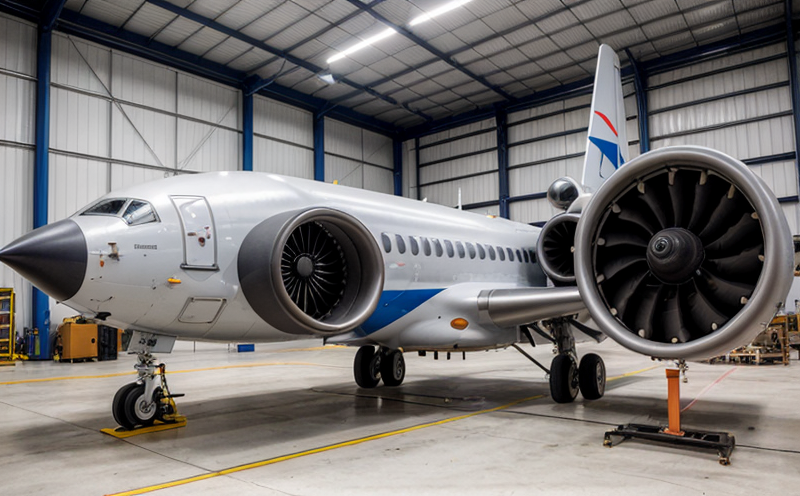Low-Frequency Noise Testing in Aircraft Cabins
The testing of low-frequency noise within aircraft cabins is critical to ensuring passenger comfort and crew health, particularly during long-haul flights. Low-frequency noise, often below the threshold of human hearing but detectable by sensitive instruments, can have significant impacts on cabin environments. This type of noise includes frequencies typically between 10 Hz and 200 Hz, which are not easily heard but can cause stress and discomfort.
The testing process involves several key steps to ensure accurate measurement and analysis. The first step is the preparation of the specimen or aircraft section under test. This involves creating a controlled environment that simulates real-world conditions as closely as possible. The cabin setup must be free from external noise sources, ensuring that only the low-frequency noise generated within the cabin itself is captured.
Instrumentation plays a crucial role in this testing process. High-quality microphones and sound level meters are used to capture the ambient noise levels accurately. These instruments must meet strict accuracy standards as defined by international standards such as ISO 3741-2:2009, which specifies methods for measuring background noise in buildings.
The testing process itself involves several stages. Initially, a baseline measurement is taken to establish the initial noise levels within the cabin. This serves as a reference point against which any changes or improvements can be measured. Subsequent measurements are made after implementing various mitigation strategies, such as sound-absorbing materials and insulation techniques.
Once the data has been collected, it undergoes rigorous analysis to ensure compliance with relevant standards. For instance, the noise levels must not exceed a certain threshold defined by aviation authorities like the Federal Aviation Administration (FAA) or the European Union Aviation Safety Agency (EASA). The results are then compiled into comprehensive reports that detail all findings and recommendations for improvement.
| Application | Description |
|---|---|
| Aircraft Design and Development | Identifying areas of noise generation early in the design process to enhance passenger comfort. |
| Compliance with Aviation Standards | Maintaining adherence to international standards like ISO 3741-2:2009 for noise measurement. |
| R&D Optimization | Improving cabin acoustics through iterative testing and refinement of materials and designs. |
| Operational Efficiency | Evaluating the effectiveness of noise mitigation strategies in real-world operational settings. |
Why It Matters
The importance of low-frequency noise testing cannot be overstated, especially given the increasing demand for quieter aircraft to meet environmental and passenger comfort standards. Studies have shown that prolonged exposure to low-frequency noise can lead to stress, sleep disturbances, and even physical health issues among crew members and passengers.
- Reduces operational costs by minimizing the need for frequent maintenance due to stress-related wear and tear on equipment.
- Enhances passenger satisfaction, leading to higher customer loyalty and potentially increased revenue streams.
- Promotes a safer working environment for cabin crew, reducing fatigue and improving overall safety standards.
Applied Standards
The testing of low-frequency noise in aircraft cabins is governed by several international standards aimed at ensuring the highest levels of accuracy and consistency. These include ISO 3741-2:2009, which provides guidelines for measuring background noise in buildings, including aircraft cabins.
Additionally, the FAA and EASA have specific regulations that mandate compliance with these standards to ensure safety and passenger comfort. Adherence to these standards not only ensures legal compliance but also enhances the reputation of airlines and manufacturers.
Industry Applications
- Aircraft Design and Development: Identifying areas of noise generation early in the design process to enhance passenger comfort.
- Compliance with Aviation Standards: Maintaining adherence to international standards like ISO 3741-2:2009 for noise measurement.
- R&D Optimization: Improving cabin acoustics through iterative testing and refinement of materials and designs.
- Operational Efficiency: Evaluating the effectiveness of noise mitigation strategies in real-world operational settings.





